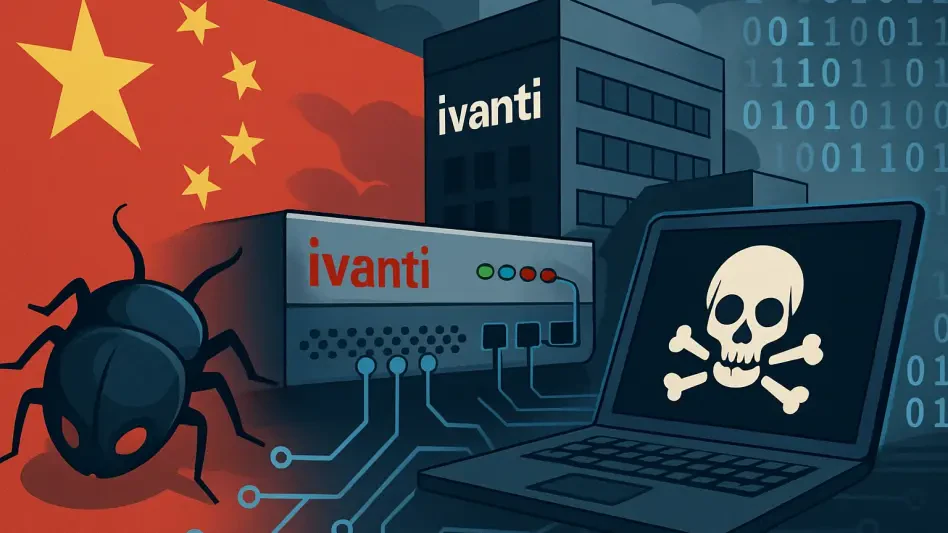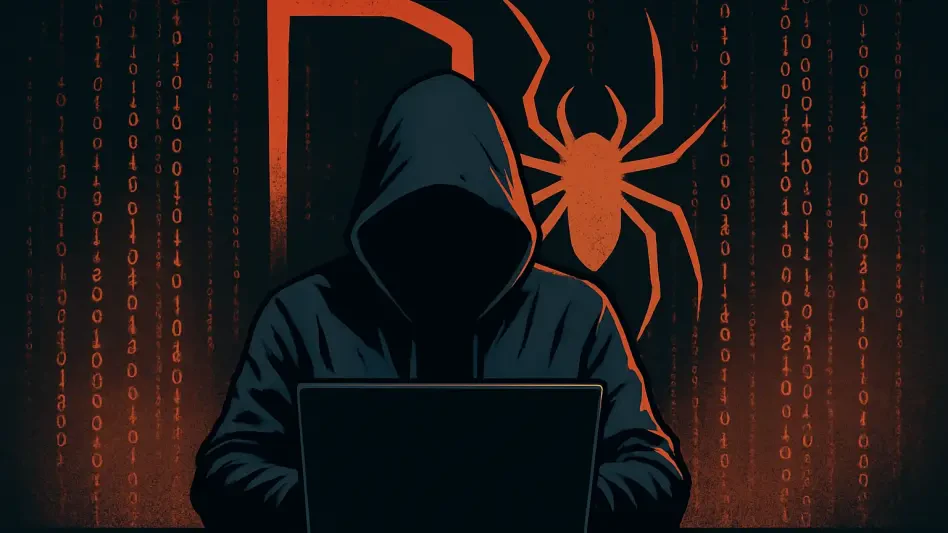In an alarming development that underscores the persistent dangers lurking in the digital landscape, the U.S. Cybersecurity and Infrastructure Security Agency (CISA) has issued a critical warning about sophisticated malware linked to Chinese state-sponsored actors targeting Ivanti’s Endpoint Manager Mobile (EPMM) systems. This recent report highlights the exploitation of two zero-day vulnerabilities, identified as CVE-2025-4427 and CVE-2025-4428, which were patched earlier this year by Ivanti. These flaws allowed attackers to bypass authentication mechanisms and execute remote code, posing a severe threat to enterprise mobile device management platforms. The implications of such breaches are far-reaching, as they compromise sensitive data and critical infrastructure. Beyond the immediate technical concerns, this situation sheds light on broader systemic issues, including supply-chain vulnerabilities and the escalating sophistication of cyber espionage campaigns. This analysis delves into the intricate details of the malware, the nature of the attacks, and the urgent steps needed to mitigate these risks.
Unpacking the Technical Sophistication of the Malware
The malware at the heart of these Ivanti exploits showcases a level of technical prowess that has alarmed cybersecurity experts. Named “Slippery Sphinx” and “Snooping Sphinx,” the two primary toolsets function as a loader and a malicious listener, respectively. These tools enable attackers to inject malicious code into legitimate processes, effectively evading detection while establishing persistent backdoor access for data theft and server manipulation. The vulnerabilities were exploited in a chained sequence, with one flaw allowing attackers to bypass login protections and the other enabling arbitrary code execution. Such tactics are not new but reflect a consistent pattern of targeting endpoint management systems. CISA’s detailed analysis reveals how these methods mirror earlier exploits, emphasizing the relentless innovation of adversaries in exploiting software gaps. The rapid weaponization of these flaws, particularly evident in an incident shortly after public proof-of-concept exploits surfaced, highlights the narrow window organizations have to respond to emerging threats.
Beyond the immediate mechanics of the malware, the persistence mechanisms employed are particularly concerning. Techniques such as boot disk manipulation ensure that even after initial detection and mitigation efforts, the malware can maintain long-term access to compromised systems. This level of resilience challenges traditional security measures, as standard antivirus solutions and routine scans often fail to detect deeply embedded threats. The ability of attackers to manipulate legitimate processes further complicates forensic analysis, requiring organizations to adopt more advanced tools and strategies. CISA’s report underscores the importance of understanding these sophisticated evasion tactics to develop effective countermeasures. As mobile endpoints become increasingly integral to enterprise operations, the stakes for securing these systems grow exponentially. The technical depth of these attacks serves as a stark reminder that cybersecurity is an ever-evolving battleground, demanding constant vigilance and adaptation from defenders.
Attribution and Geopolitical Implications
The suspected involvement of Chinese state-sponsored actors in these Ivanti exploits adds a significant geopolitical dimension to the cybersecurity narrative. While CISA has refrained from officially confirming attribution, insights from private researchers and discussions on social media platforms point to groups like UNC5221, which are believed to have ties to Beijing-backed operations. This suspicion aligns with broader patterns of espionage-driven cyber campaigns that target critical infrastructure and software supply chains across the globe. Ivanti’s history of vulnerabilities, including earlier incidents with its Connect Secure appliances, amplifies concerns about systemic risks in widely used enterprise tools. Such repeated exposures not only undermine trust in key software providers but also highlight the strategic importance of these systems as targets for nation-state actors. The potential implications of these attacks extend beyond individual organizations, posing threats to national security and economic stability.
Delving deeper into the geopolitical context, these incidents reflect a growing trend of cyber operations being used as tools of statecraft. The focus on supply-chain attacks suggests a deliberate effort to exploit interconnected systems, where a single vulnerability can cascade through multiple organizations. This approach maximizes the impact of an attack, disrupting operations on a massive scale while maintaining plausible deniability for the perpetrators. CISA’s inclusion of these vulnerabilities in its Known Exploited Vulnerabilities Catalog signals the urgency of addressing not just the technical flaws but also the broader strategic motivations behind them. As global tensions continue to play out in cyberspace, enterprises must recognize that their security posture is not merely a technical concern but a critical component of a larger geopolitical chessboard. Strengthening defenses against such threats requires international collaboration and a nuanced understanding of the actors and motives driving these sophisticated campaigns.
Mitigation Strategies and Industry Response
In response to these critical vulnerabilities, CISA and industry experts have outlined a comprehensive set of mitigation strategies to help organizations safeguard their systems. Immediate action is paramount, with recommendations including updating to the latest Ivanti EPMM versions to patch known flaws. Beyond patching, network segmentation is advised to limit the spread of potential breaches, while enhanced monitoring through anomaly detection can help identify suspicious activity early. Given the malware’s persistence tactics, thorough forensic analysis is essential, often necessitating the use of clean external images for virtual systems to ensure no residual threats remain. Tools such as Nmap and Metasploit are suggested for vulnerability scanning, and CISA has provided specific YARA and SIGMA rules to assist in threat detection. These measures aim to bridge gaps in zero-trust architectures, particularly as mobile endpoints become ubiquitous in enterprise environments, presenting both opportunities and risks.
The industry response to these exploits also emphasizes the need for a cultural shift in cybersecurity practices. Experts stress that relying solely on reactive measures is no longer sufficient; proactive strategies must be prioritized to stay ahead of sophisticated adversaries. This includes regular security audits, employee training to recognize phishing and other entry points for malware, and investment in advanced threat detection technologies. The consensus among cybersecurity professionals is that collaboration across sectors is vital, with shared intelligence and resources playing a key role in building collective resilience. Additionally, the incident has sparked discussions about vendor accountability, with calls for stricter standards in software development and transparency in patching processes. As enterprises grapple with these evolving threats, adopting a multi-layered security approach that integrates technical solutions with strategic foresight is not just advisable but imperative for long-term protection.
Looking Ahead to Systemic Solutions
Reflecting on the broader implications of these Ivanti exploits, it’s evident that they are not isolated incidents but part of a larger pattern of supply-chain attacks targeting high-value enterprise systems. The ability of the malware to evade standard defenses exposed significant limitations in traditional security frameworks, prompting a reevaluation of how organizations approach cybersecurity. CISA’s proactive stance in sharing indicators of compromise and actionable guidance marked a critical step in fostering collective defense. This collaborative effort equipped organizations with the intelligence needed to counter immediate threats while laying the groundwork for addressing systemic vulnerabilities.
Moving forward, the focus shifts to actionable next steps that go beyond mere patching. Industry leaders advocate for the integration of AI-driven threat detection to anticipate and neutralize sophisticated malware before it can cause harm. Strengthening supply-chain security emerges as a priority, with calls for rigorous vetting of software vendors and enhanced transparency in development practices. Ultimately, the response to these exploits underscores that cybersecurity demands a dynamic, multi-layered strategy, blending cutting-edge technology with robust policy frameworks to navigate the complex landscape of cyber threats.








